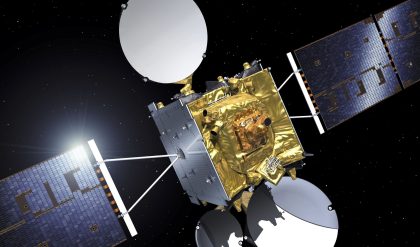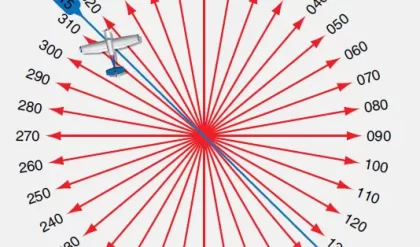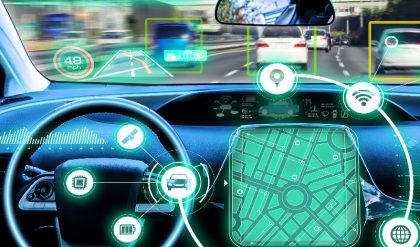A few interesting project topics in Digital Signal Processing with abstracts for you. Read it and do your project.

1.TRACKING AND COUNTING PEOPLE IN VISUAL SURVEILLANCE SYSTEMS [IEEE 2011]
ABSTRACT The greatest challenge on monitoring characters from a monocular video scene is to track targets under occlusion conditions. In this work, we present a scheme to automatically track and count people in a surveillance system. First, a dynamic background subtraction module is employed to model light variation and then to determine pedestrian objects from a static scene. To identify foreground objects as characters, positions and sizes of foreground regions are treated as decision features. Moreover, the performance to track individuals is improved by using the modified overlap tracker, which investigates the centroid distance between neighboring objects to help on target tracking in occlusion states of merging and splitting. On the experiments of tracking and counting people in three video sequences, the results exhibit that the proposed scheme can improve the averaged detection ratio about 10% as compared to the conventional work.
2. DESIGN AND OPTIMIZATION OF THE MOVING OBJECT DETECTING SYSTEM BASED ON BLACKFIN DSP [IEEE 2010]
Abstract – Based on Blackfin DSP, we design and implement a compact moving object detecting and video recording system. The background subtraction algorithm is applied to the system to detect the moving objects. And when there is any object being detected, the frames containing the moving objects will be recorded automatically. In order to improve the accuracy of the detecting results, in this paper, instead of using the median filter, we design the block filtering algorithm to filter the noise with the simply connected block region, since the block filtering algorithm needs far less amount of computation than the median filtering algorithm. Further, in order to improve the detecting speed, based on the memory configuration of the system, a new block based parallel data processing mechanism is proposed, in which the external memory data to be processed is moved into the internal memory space in advance that greatly reduces the external memory access requests of the DSP core, thus good parallel data processing and transmission is achieved. The results of the experiments demonstrate that the block filtering algorithm is more suitable for a real time system than the median filter, because the block filtering algorithm improves the filtering efficiency greatly by reducing the amount of filtering computation and also works with satisfying statistical accuracy. In addition, the results of the experiments also show that the block based parallel data processing mechanism is highly effective in improving detecting speed and contributes to a more efficient parallel detecting system.
3. AN IMPROVED MEDIAN FILTERING ALGORITHM COMBINED WITH AVERAGE FILTERING [IEEE 2011]
Abstract—To solve the contradiction between the noise reducing effect and the time complexity of the standard median filter algorithm, the paper proposed an improved median filter algorithm combined with average filtering. According to the correlation of the image, the algorithm adaptively resizes the filter mask according to noise levels of the mask. According to the sorting results of the selected pixel values in the neighborhood, the algorithm uses the median to replace the original pixel. Experimental results show that the improved algorithm can effectively reduce time complexity and has better noise-reducing effect than the standard median filter algorithm. It has a good application prospect in image processing.
4. RESEARCH AND IMPLEMENTATION OF INFORMATION HIDING BASED ON RSA AND HVS [IEEE 2011]
Abstract: To better protect the security of information, this paper proposed an information transmission scheme which combined the cryptosystem and information hiding. The scheme pretreated the information firstly by making use of the RSA arithmetic which belongs to the public key cryptosystem, and then took advantage of the improved LSB which based on the Human Visual System to make the cryptograph hid in the 24 bits BMP image and transmitted it. The embedding and extracting process of secret information in the scheme were discussed in detail. Also, the result of information hiding achieved by this scheme was given. The principle of the scheme is simple, and it is easy to implement. The experimental result suggests that the scheme is efficient and has good practical value.
5. PERFORMANCE ANALYSIS OF INTEGER WAVELET TRANSFORM FOR IMAGE COMPRESSION [IEEE 2011]
Abstract— For image compression, it is very necessary that the selection of transform should reduce the size of the resultant data as compared to the original data set .In this paper, a new lossless image compression method is proposed. For continuous and discrete time cases, wavelet transform and wavelet packet transform has emerged as popular techniques. While integer wavelet using the lifting scheme significantly reduces the computation time, we propose a completely new approach for further speeding up the computation. First, wavelet packet transform (WPT) and lifting scheme (LS) are described. Then an application of the LS to WPT is presented which leads to the generation of integer wavelet packet transform (IWPT). The proposed method, Integer Wavelet Packet Transform (IWPT) yields a representation which can be lossless, as it maps an integer valued sequence onto the integer valued coefficients. The idea of Wavelet Packet Tree is used to transform the still and color images. IWPT tree can be built by iterating the single wavelet decomposition step on both the low-pass and high-pass branches, with rounding off in order to achieve the integer transforms. Thus, the proposed method provides good compression ratio.
6. DESIGN OF A COLOR IMAGE FUSION SYSTEM BASED ON DSP AND FPGA [IEEE 2010]
Abstract—In this paper, a color image fusion system based on DSP and FPGA is introduced .In the system, TMS320DM642 is used as the kernel processor to finish the images fusion arithmetic, storage and display. FPGA, which has the ability to control the logic of image capturing, is used as the assistive processor. The experiment shows that this technology can obtain color fusion image.
7. THE PORTABLE WIRELESS AERIAL IMAGE TRANSMISSION SYSTEM BASED ON DSP [IEEE 2010]
Abstract-The paper provides portable digital aerial image system based on Blackfin DSP. The system includes the aeromodelling carrier part and the ground control part. The image transmission between the two parts realized with Nordic Semiconductors RF transceiver nRF24L01. The aeromodelling-carrier part takes pictures using CMOS image sensor and compresses data by ADSPBF531, then sends them to ground part wirelessly. The ground control center based on ADSP-BF533 supervises images real time and samples data. After relevant subsequent image processing and compressing, the final image is saved locally. In controllable range, the system can take pictures anyplace and any angle, can lock object neatly. This system features double DSP architecture so it can transmit and process image very fast. It is small, light, low power consumption and low cost. It is easy for single taking and operation, so has good application prospect in field reconnaissance, traffic surveillance, city layout and the situation of bad weather or a disaster and so on.
8.DETECTING BACKGROUND SETTING FOR DYNAMIC SCENE [IEEE 2011]
Abstract – Processing Real-Time image sequence is now possible because of advancement of technological developments in digital signal processing, wide-band communication, and high-performance VLSI. With the developments in video technology, the surveillance system can be built with some low cost gadget such as the web-camera. In this modern life with increasing number of crime rate, people in society need for security and safety; video surveillance has become important reason to oppose threats of crime and terrorism. The most fundamental part of surveillance is foreground detection, which is retrieval of an object of interest. The object of interest can remodel by common background subtraction technique. There is some problem arises by using this technique, where because of variation of light source, the background constantly changes. The intensity of pixel changes throughout the object detection takes place. Intensity of pixel value changes leads to improper foreground detection, the background detected as foreground object. This paper proposes a method to model and update the background of the scene by intersection solving method.
9.A VIEW ON LATEST AUDIO STEGANOGRAPHY TECHNIQUES [IEEE 2011]
Abstract—Steganography has been proposed as a new alternative technique to enforce data security. Lately, novel and versatile audio steganographic methods have been proposed. A perfect audio Steganographic technique aim at embedding data in an imperceptible, robust and secure way and then extracting it by authorized people. Hence, up to date the main challenge in digital audio steganography is to obtain robust high capacity steganographic systems. Leaning towards designing a system that ensures high capacity or robustness and security of embedded data has led to great diversity in the existing steganographic techniques. In this paper, we present a current state of art literature in digital audio steganographic techniques. We explore their potentials and limitations to ensure secure communication. A comparison and an evaluation for the reviewed techniques is also presented in this paper.
10.A REAL-TIME VISION SYSTEM FOR NIGHTTIME VEHICLE DETECTION AND TRAFFIC SURVEILLANCE(IEEE MAY 2011)
Abstract—This paper presents an effective traffic surveillance system for detecting and tracking moving vehicles in nighttime traffic scenes. The proposed method identifies vehicles by detecting and locating vehicle headlights and taillights using image segmentation and pattern analysis techniques. First, a fast bright-object segmentation process based on automatic multilevel histogram thresholding is applied to effectively extract bright objects of interest. This automatic multilevel thresholding approach provides a robust and adaptable detection system that operates well under various nighttime illumination conditions. The extracted bright objects are then processed by a spatial clustering and tracking procedure that locates and analyzes the spatial and temporal features of vehicle light patterns, and identifies and classifies moving cars and motorbikes in traffic scenes. The proposed real-time vision system has also been implemented and evaluated on a TI DM642 DSP-based embedded platform. The system is set up on elevated platforms to perform traffic surveillance on real highways and urban roads. Experimental results demonstrate that the proposed traffic surveillance approach is feasible and effective for vehicle detection and identification in various nighttime environments.




